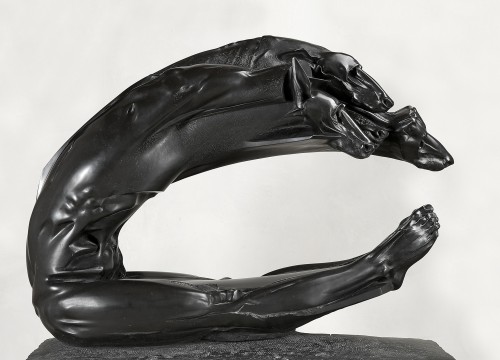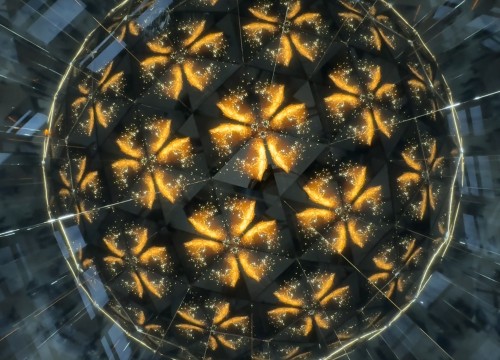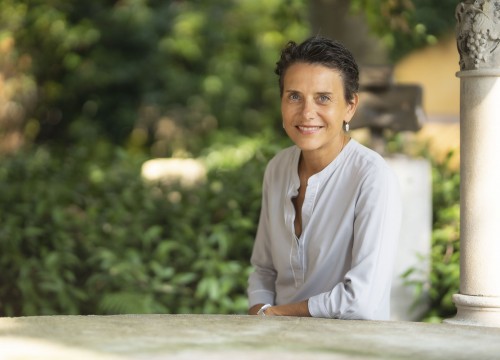His activity featured the cancelation of the expression, to be followed by a renewed explorative challenge
Francis Bacon stated: “In my own way, I desperately go here and there following my instincts”. His world was an endless vanishing point, to be seized by frames translatable into formal and behavioral multiplications. The many sheets which have been issued in the formidable and polished catalogue “The Francis Bacon Collection” (curated by Fernando Castro Florez, published by Scripta Manent) show an attitude that is not so much related to portrayal, but rather to a heartrending investigation (or auto-investigation) aiming at interpreting and profaning the subconscious through the repeated excavation of depicted subject’s face. This was his privileged practice, magmatic and metaphorical, featuring a constant cancellation of the facial expression followed by a renewed explorative challenge. It was the same procedure adopted by Giacometti, an artist he was perfectly in line with. And, speaking of drawings, he stated “they are a fine example of automatism”. And again: I wait for what I call the ‘accident’… The patch is the accident”.
"I desperately go here and there following my instincts"
So, the search and the conquest of the accident represented the necessary ingredient in a gesture that anticipated the intention, which would be involved in at a later stage. This violent and instinctive approach of his was included and accepted in an essential and aseptic geometrical structure as if Francis needed to exhibit his distressing and neverending images in a limbo of extraordinary preceptive attraction.
The same face was endlessly replicated with only slightest variations in the features
In such an emotional context, he would worry about finding with the pencil, the pastel or the contribution of color, the beginning of an ever-new creative surprise which led him to endlessly replicate the same face with only slightest variations in the features, as if he had wanted to question, moment by moment, its sudden mutations. So to foster his own torment, comparable to a punishment to continuously expiate and which had to be reproduced on sheets in small portraits or in wide aerial and spatial body suspensions where, each time, he could drown his personal existential affliction.
The Francis Bacon Collection: Curator Fernando Castro Florez Speaks
The world of Baconian criticism is divided between experts still debating on the authenticity of Bacon’s drawings and the critics recognizing the value they had as part of his artistic career. The quality and quantity of the artworks of the Francis Bacon Foundation of Drawings which have been donated to Cristiano Lovatelli Ravarino suggest they are works transpiring the effort and the artist’s will to lend them a specific and autonomous value. These ‘Italian’ works have been subjected to a long-running court case to prove their authenticity, never denied so far.
Fernando Castro Florez
The Francis Bacon Collection: Here Is the Comprehensive Catalogue
 The publication of this comprehensive catalogue of the Francis Bacon Collection has multiple purposes: to create order in this impressive collection, to make it accessible to scholars, collectors and enthusiasts as well as to offer it to everyone through photographic images that allow us to experience the works in full chromatic coherence and in all the details of a close-up view. Having overcome for years any possible ambiguity of interpretation, these works by Francis Bacon require careful, disinterested and honest reflection and observation. The wide literature - scientific and narrative - dedicated to the Irish master, to his declarations and secrets, has been translated over the decades, too often, into a dull and shared interpretative flatness, mortifying that sense of research and discovery that should instead keep alive the spirit of every researcher. The richness of this volume represents in this sense an opportunity, not only to understand the artist Francis Bacon even better, but to observe all his works from a different angle, always keeping the compass steady in the direction of rigorous research that does not undermine, but rather enhances, emotionality and passion.
The publication of this comprehensive catalogue of the Francis Bacon Collection has multiple purposes: to create order in this impressive collection, to make it accessible to scholars, collectors and enthusiasts as well as to offer it to everyone through photographic images that allow us to experience the works in full chromatic coherence and in all the details of a close-up view. Having overcome for years any possible ambiguity of interpretation, these works by Francis Bacon require careful, disinterested and honest reflection and observation. The wide literature - scientific and narrative - dedicated to the Irish master, to his declarations and secrets, has been translated over the decades, too often, into a dull and shared interpretative flatness, mortifying that sense of research and discovery that should instead keep alive the spirit of every researcher. The richness of this volume represents in this sense an opportunity, not only to understand the artist Francis Bacon even better, but to observe all his works from a different angle, always keeping the compass steady in the direction of rigorous research that does not undermine, but rather enhances, emotionality and passion.
Federico Ferrari
Francis Bacon: the historic archive
The Francis Bacon Collection of Drawings has created and cared for the archives for a long time with the aim of collecting all the documentary resources related to the collection and to the artist, facilitating public access to scholars, collectors and cultural institutions but also for educational purposes and the scientific and cultural promotion of this artistic heritage. The work carried out by the Archives will be supported in a strategic and continuous way by the Trust Fund Team (constituting part of the strategic plan of activities) in order to implement the research of the collection, its digitalization and preservation, as well as its use for didactic and scientific purposes and, where necessary, for commercial use. This effort also aims at using all available digital tools for the ordering and the reorganization of the collection. The seat of the historical archives recently inaugurated in Padua, in Piazzetta Bussolin 15, under the direction of Serena Baccaglini represents a strategic opportunity for the understanding of Francis Bacon’s works on paper, correlating the paper and digital research materials collected by Umberto Guerini, Fernando Castro Florez, Edward Lucie Smith and other curators who participated in the organization of all the public events regarding the collection. The University of Padua, through the director of the historical archives Serena Baccaglini, will have a decisive role in giving continuity to the research of new materials and works created by the Irish master.
Massimo Ferrarotti
































